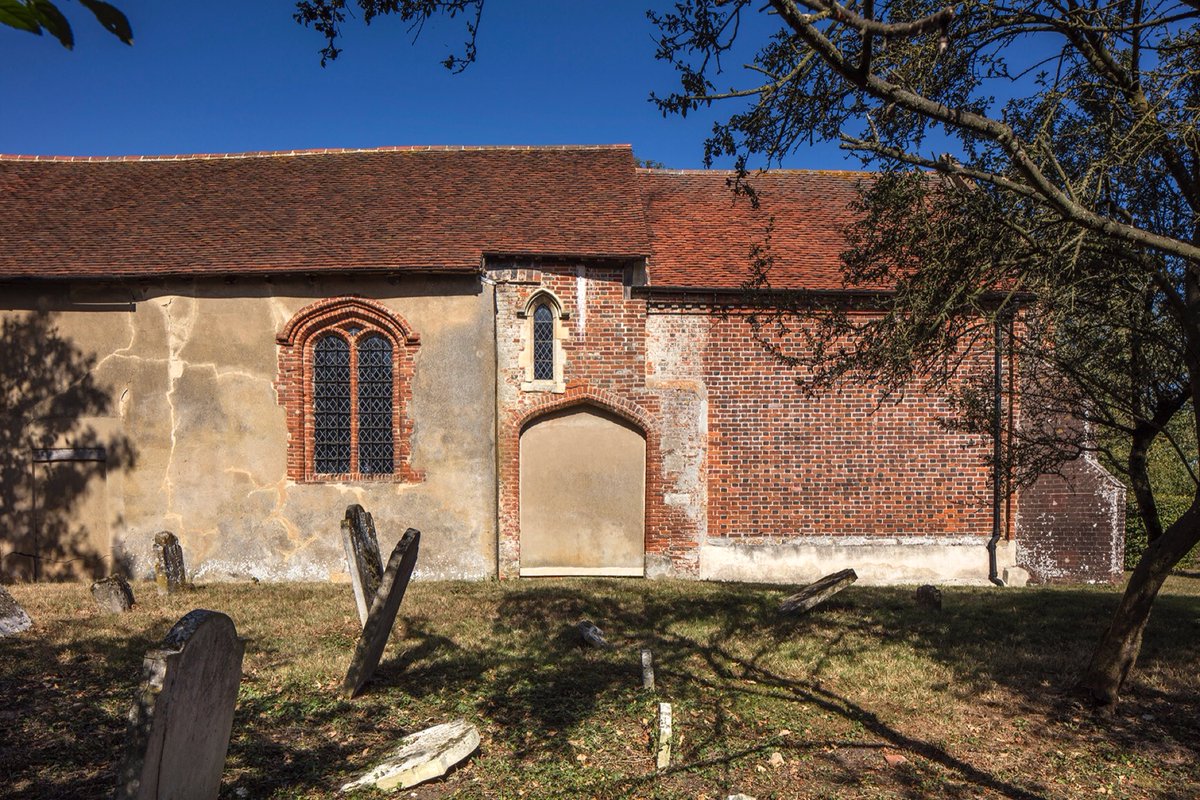
A Wellingtonia aka giant sequoia dominates the skyline at St Mary's church in Hardmead, Bucks. It's one of the oldest of its kind in the country. But how did it come to be there?
Put your feet up and enjoy a tall (but true) tale for #NationalTreeWeek ...
Put your feet up and enjoy a tall (but true) tale for #NationalTreeWeek ...

In the 1850s, California was in the grip of the Gold Rush. While thousands panned for gold, others made their fortune on plant discoveries. Cornishman William Lobb had brought Chile's monkey-puzzle tree to the UK (like this one here) and was looking for the next BIG thing … 

The first European to document the giant sequoia was hunter Augustus Dowd, who stumbled into a grove of 96 huge trees at Calaveras Grove while pursuing a grizzly bear. Lobb heard his story in San Francisco and headed straight to the grove to collect seeds, cones and small trees. 

In 1854 Lobb shipped the first specimens back to the UK and marketed them as the ‘Monarch of the Californian Forest’. It sparked a craze for this gigantic redwood tree, which brought the excitement and epic proportions of the ‘Wild West’ to British parks and gardens. 

In Britain it was named 'Wellingtonia gigantea' after the recently deceased Duke of Wellington. However, 'Wellingtonia' had already been used for another plant. Plus, the Americans preferred to call it Washingtonia, after their first President (and it was their tree, after all!) 



After decades of debate, it finally received the botanical name 'Sequoiadendron giganteum' in 1939. However, 'Wellingtonia' stuck as the common name here in Britain.
18 giant sequoias can be seen in Oxford's University Parks & Arboretum (pictured) and there's an Oxford connection to Hardmead’s tree too: it was planted on Boxing Day, 1860 by Samuel Wilberforce, Lord Bishop of Oxford, to commemorate the church's reopening after its restoration. 

The morning of 26 Dec was wet and stormy, but every seat was filled at the special prayer service, by clergy, gentry, yeomen and labourers — who had been given the day off work. The bishop (seen here) was attended by 2 rural deans and upwards of 20 clergy.
📷 Wellcome Collection
📷 Wellcome Collection

The Bucks Herald reported that 'After the service the Bishop planted a tree, "Wellingtonian Gigantia," in the south-west part of the churchyard, commemorative of the event.'
The reason for the choice of tree is unknown, but could have simply been a matter of fashion.
The reason for the choice of tree is unknown, but could have simply been a matter of fashion.
The tree planting was followed by luncheon, and all of the labourers of Hardmead and their families were treated to 'a substantial repast of beef, mutton, and plum pudding.' 

Bishop of Oxford Samuel Wilberforce was one of the greatest public speakers of his day. He was the son of William Wilberforce — an MP who led the movement to abolish the slave trade — and was himself a passionate abolitionist, as well as a campaigner against animal cruelty.
But he's best remembered for opposing Darwin's theory of evolution in a public debate at Oxford Uni Museum of Nat. History in 1860, when he asked Huxley, a supporter of Darwin's theory, whether it was through his grandmother or grandfather that he was descended from a monkey! 

This cartoon of Wilberforce at the debate appeared in Vanity Fair in 1869. He’s making his characteristic 'hand washing' gesture, which may explain why he was nicknamed “Soapy Sam”! 

Back to Hardmead, where the giant sequoia planted by Wilberforce has grown steadily for almost 161 years. It's currently 26 metres tall with a trunk that spans a metre in diameter. 

But given that the giant sequoia 'General Sherman' — the largest known single stem tree living on earth — is as much as 2700 years old, stands 84m high and measures 15m in diameter, our little tree still has a very long way to go!
📷Neal Parish
📷Neal Parish

p.s. Find a giant sequoia in the UK near you at Redwood World: redwoodworld.co.uk/locations.htm
• • •
Missing some Tweet in this thread? You can try to
force a refresh



















